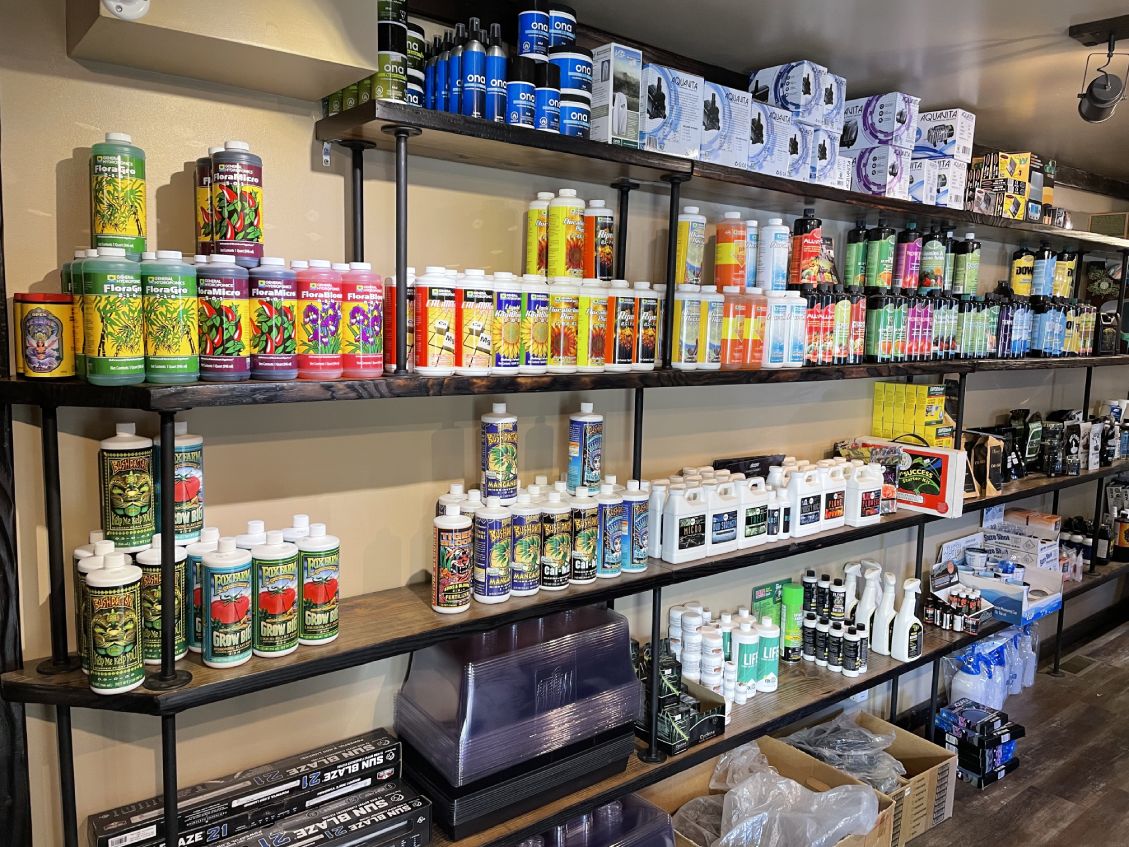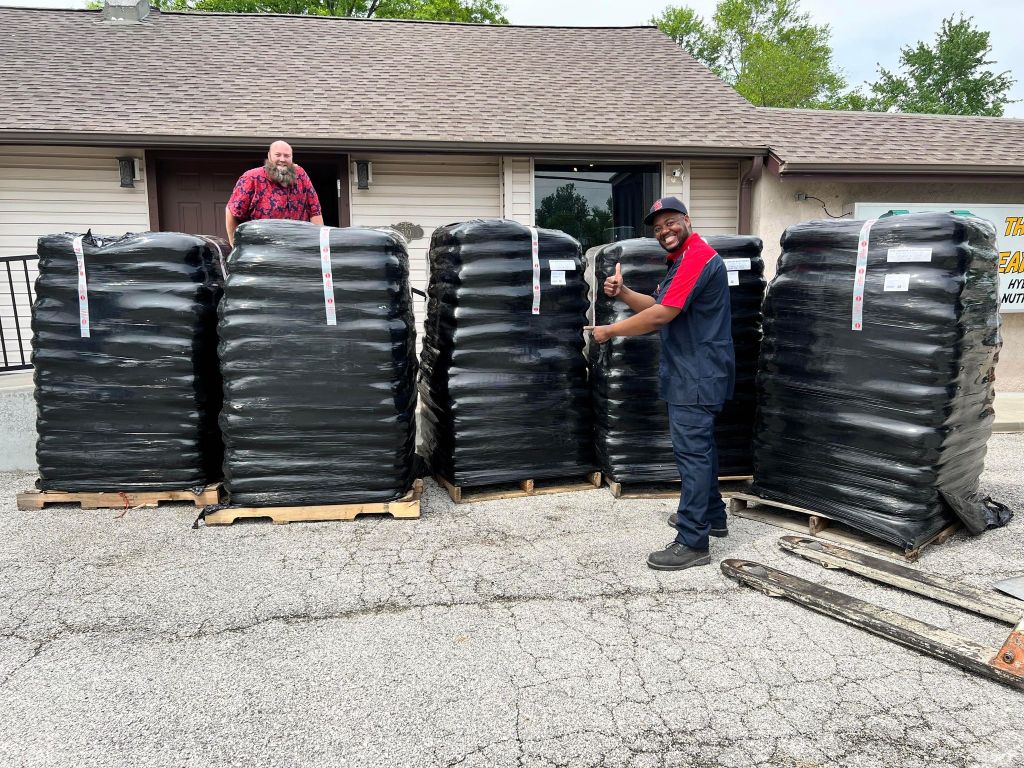Harnessing the Power of Hydroponics: a Deep Dive Into Utilizes and Various Types
In the world of modern agriculture, hydroponics has become a technique that challenges standard farming practices by using a water-efficient and space-saving alternative. The use of hydroponic systems opens up a world of possibilities for cultivating plants in diverse settings, ultimately affecting food production and sustainability. As we browse with the intricate landscape of hydroponics, discovering its numerous types and applications, a much deeper understanding of its prospective to change farming practices and address global food safety and security worries begins to unfold.
Advantages of Hydroponic Farming
Hydroponic farming uses numerous advantages over standard soil-based agriculture. One of the main advantages is water effectiveness; hydroponic systems use up to 90% much less water compared to standard farming methods.
Furthermore, hydroponic farming permits higher control over nutrient degrees, causing faster plant development and greater yields. By supplying necessary nutrients straight to the plant origins, hydroponic systems advertise much healthier and more robust plant advancement. Furthermore, the controlled atmosphere of hydroponic systems lessens the risk of illness and insects, minimizing the demand for hazardous pesticides and herbicides.

Usual Sorts Of Hydroponic Solutions
Offered the countless advantages of hydroponic farming, it is important to discover the various typical sorts of hydroponic systems used in contemporary agriculture. One common kind is the Deep Water Society (DWC) system, where plant origins are immersed in a nutrient option. Another usual system is Nutrient Movie Technique (NFT), which entails a slim movie of nutrient-rich water flowing over the roots - The Indoor Earthworm. The Ups and downs system, likewise understood as Flood and Drainpipe, regularly floodings the plant roots with nutrient service before draining it. Aeroponics attracts attention for its technique of suspending plant origins in the air and misting them with a nutrient service. Drip systems provide a managed amount of nutrient solution directly to the plant's base. Wick systems, the easiest type of hydroponics, make use of a wick to passively supply nutrient solution to the plant roots. Each of these systems uses special benefits and caters to different plant kinds and development stages in hydroponic agriculture.
Nutrient Movie Technique (NFT) System

Among the vital advantages of the NFT system is its water performance. The Indoor Earthworm. Considering that the nutrient service is recirculated in a closed system, this method utilizes dramatically less water contrasted to conventional dirt farming. In addition, the NFT system is space-efficient, making it suitable for indoor farming or in locations with minimal room for typical agriculture
Nevertheless, the NFT system requires careful surveillance and upkeep to guarantee the continual circulation of water and nutrients. Any interruption in the circulation can promptly affect plant wellness. In general, the NFT system uses a lasting and over here effective method to expand plants hydroponically, especially for crops that thrive in well-oxygenated root settings.
Deep Water Society (DWC) System
Moving from the Nutrient Film Method (NFT) system, the Deep Water Culture (DWC) system is a hydroponic technique that involves putting on hold plant origins directly in a nutrient option. Unlike NFT, where origins are constantly subjected to a slim movie of nutrient remedy, DWC plants have their roots immersed in a reservoir full of aerated nutrient water. The origins hang in the nutrient service, permitting straight uptake of water and essential nutrients.
One of the vital benefits of the DWC system is its simplicity and low upkeep demands. DWC systems call for ample aeration to protect against origin rot and make certain optimum nutrient absorption.
Aeroponic System
An innovative technique in hydroponics farming, the Aeroponic System utilizes a fogging or misting system to provide nutrients directly to plant roots suspended airborne. This system is recognized for its capacity to advertise fast growth and efficient nutrient uptake as a result of the straight shipment of nutrients to the roots, permitting the plant to concentrate its power on development instead of looking for nutrients. In an aeroponic configuration, plants are usually housed in a shut atmosphere where the origins are intermittently misted with a nutrient solution. This misting cycle makes certain that the roots obtain adequate oxygen, advertising healthy and balanced origin development and overall plant growth.
Among the crucial benefits of aeroponics is its water effectiveness, as the system makes use of significantly less water contrasted to standard soil-based cultivation approaches. Furthermore, the precise distribution of nutrients straight to the origins can cause greater yields and faster development rates. While aeroponics can be much more intricate to establish up and keep compared to other hydroponic systems, its potential for raised plant development and performance makes it a popular selection for hydroponic enthusiasts and industrial growers looking for ideal results.
Conclusion
To conclude, hydroponic farming offers numerous advantages and various kinds of systems to choose from. The Nutrient Movie Technique (NFT) system, Deep Water Society (DWC) system, and Aeroponic system are amongst the most common methods used in hydroponics. Each system has its very own advantages and constraints, making it crucial for farmers to meticulously consider their requirements and preferences prior to choosing one more info here of the most suitable system for their plants.
Unlike other hydroponic systems where plants are immersed in a nutrient solution, in the NFT system, the origins are subjected to the water only in a shallow film.Moving from the Nutrient Film Strategy (NFT) system, the Deep Water Culture (DWC) system is a hydroponic method that involves putting on hold plant origins directly in a nutrient remedy.An ingenious method in hydroponics farming, the Aeroponic System utilizes a misting or fogging system to supply nutrients directly to plant roots suspended in the air. The Nutrient Film Strategy (NFT) system, Deep Water Society (DWC) system, and Aeroponic system are amongst the most usual techniques used in hydroponics. Each system has its own advantages you could check here and restrictions, making it necessary for farmers to very carefully consider their needs and preferences prior to choosing the most ideal system for their plants.